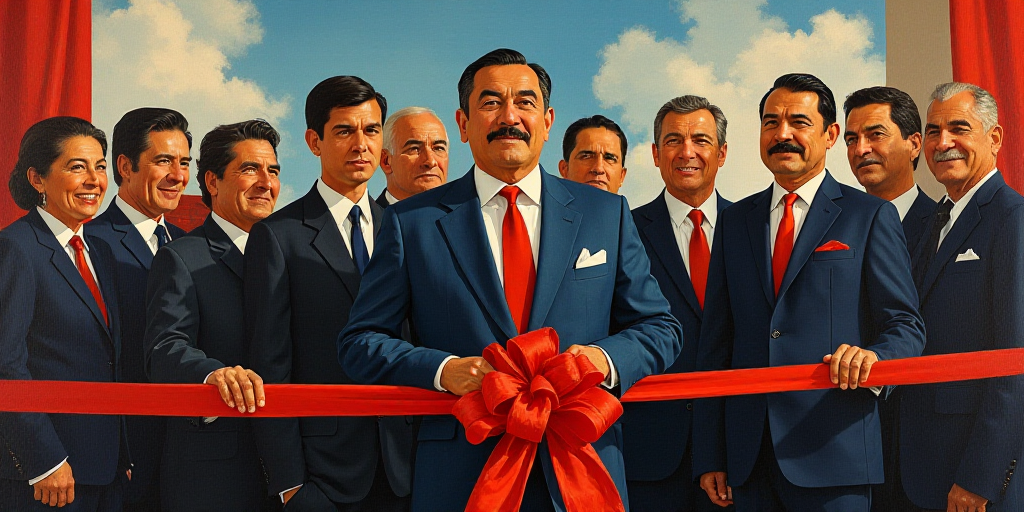Introduction to Sebastian (Enrique Carvajal)
On Thursday, April 24, the halls of the Palacio Legislativo welcomed master sculptor Enrique Carvajal, better known as Sebastian, who inaugurated his sculpture exhibition titled “Sebastian in San Lázaro.” The collection, featuring 14 pieces, spans the entire legislative building and will be accessible to diputados, staff, and the general public.
Sebastian’s Artistic Journey and Philosophy
Born in Chihuahua in 1947, Sebastian has established himself as a prominent figure in the art world. His sculptures range from pre-Hispanic-inspired pieces like the Ixtli Don to abstract and geometric forms. He expressed his excitement about showcasing these beloved works in the architectural space created by his friend, Pedro Ramírez Vázquez.
Public Art and Accessibility
Sebastian’s sculptures are inherently public, as stated by Ricardo Monreal, president of the Junta de Coordinación Política. Monreal emphasized that Sebastian’s art belongs to the streets, public spaces, and the people. He believes that Sebastian’s sculptures are democratic, inviting everyone to engage with the art and sparking curiosity and contemplation.
Sebastian’s Impact and Recognition
With 279 sculptures spread across the world, Sebastian continues to create and evolve. He believes that the best of his work is yet to come, as he constantly reinvents himself. He acknowledges the historical significance of monumental art, tracing its roots from prehistoric cave paintings to the Roman era’s architectural and urban developments.
Sebastian distinguishes between politics and art creation, asserting that while politics shape a nation’s development, art plays a crucial role in that process. He advocates for the unity of art, science, technology, and politics for a well-rounded society.
The Significance of Sebastian’s Work at San Lázaro
Diputado Ricardo Monreal expressed his delight that Sebastian’s monumental vision, originating in Mexico’s north, has reached San Lázaro. He highlighted the importance of art and politics in constructing memory and envisioning the future.
Sebastian’s Academic Background
Monreal shared how Enrique Carvajal adopted the name Sebastian after a professor at the Academia de San Carlos, Mexico’s oldest art school, compared his abstract style to Botticelli’s San Sebastian. Years later, Sebastian became an honorary member of the Academia di Belle Arti in Florence, Botticelli’s birthplace.
Sebastian has received numerous accolades, including the National Prize for Arts and Sciences and the Bellas Artes Medal. His universal and rigorous artistic formation has set him apart in Mexico’s art scene.
Key Questions and Answers
- Who is Sebastian? Sebastian, whose real name is Enrique Carvajal, is a renowned Mexican sculptor known for his public art and diverse range of styles.
- What is the significance of Sebastian’s work at San Lázaro? Sebastian’s sculptures, displayed in the Palacio Legislativo, emphasize public art’s democratic nature and its role in shaping society.
- Why is Sebastian’s art considered universal? Sebastian’s artistic journey, marked by a global perspective and rigorous training, has earned him recognition in Mexico, France, South Korea, and Japan.
- What role does art play in society, according to Sebastian? Sebastian believes that art, along with science, technology, and politics, is essential for a balanced and progressive society.






